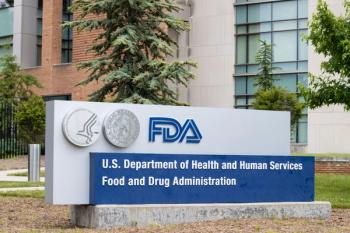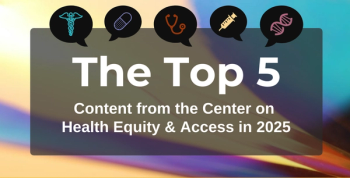
HIV Incidence, Prevalence Remain Highest in Men Who Have Sex With Men
While years of efforts to combat the HIV epidemic have resulted in major successes, progress in reducing infection among men who have sex with men has lagged as they remain the most affected population, according to a study in Annals of Internal Medicine.
As HIV infection continues to be a health concern in the United States, men who have sex with men (MSM) remain the most affected population, according to a study published in
Testing for infection and engaging in care and treatment are critical tools for preventing disease progression and achieving viral suppression. While years of efforts to combat the epidemic have resulted in successes, such as the
“In the United States, HIV incidence decreased by nearly 14.8% from 2008 to 2015,” wrote the authors of the study. “It decreased among all risk groups except MSM, who had the highest incidence, prevalence, and percentage of undiagnosed HIV infections.”
The authors used the CDC’s National HIV Surveillance System data on the first CD4 count after HIV diagnosis to model HIV incidence and prevalence from 2008 through 2015 for persons age 13 and older. Using the CD4 count following diagnosis, they estimated the time from HIV infection to diagnosis at the individual level based on a CD4 depletion model commonly used.
MSM had the highest annual rates of HIV incidence each year, with a 2015 rate (513.7 per 100,000) 16 times higher than that of an individual with infection attributed to injection drug use (32.1 per 100,000), and 135 times higher than an individual with infection attributed to heterosexual contact (3.8 per 100,000).
Among MSM, the highest HIV incidence was among those aged 25-34 in 2015, followed by those aged 13-24. During the period, HIV incidence decreased by 30% per year among MSM aged 13-24, and decreased 4.7% per year among those aged 35 to 44. However, rates increased by 44.9% among men aged 25 to 34 years.
The prevalence of HIV increased 28.4% among MSM during the period, from 492,000 infections in 2008 to 632,300 in 2015. The only decrease was seen among MSM aged 35-44, with a 3% decrease. Prevalence increased by 7.4% per year among MSM aged 25-34, 3.7% per year among those aged 45-54, and 12.1% per year among those aged 55 and older.
The authors observed a decrease (21.6%) in the rate of undiagnosed HIV infection among the patient population. In 2015, rates were highest among MSM aged 13-24 (52.2%), followed by those aged 25-34 (29.6%) and those aged 35-44 (15.9%).
“MSM continue to be the largest group infected with HIV, and reducing HIV infections among all population segments is essential to reach the goal of ending HIV and HIV disparities in the United States,” concluded the authors. “The decreases in HIV incidence among young MSM are encouraging, but many young MSM with HIV do not know they’re infected. Routine HIV screening in healthcare settings, targeted testing, and linkage to care should occur so that person with HIV can access treatment early and achieve viral suppression.”
Reference:
Singh S, Song R, Johnson A, et al. HIV incidence, HIV prevalence, and undiagnosed HIV infections in men who have sex with men, United States. [Published online March 20, 2018]. Ann Intern Med. doi: 10.7326/M17-2082.
Newsletter
Stay ahead of policy, cost, and value—subscribe to AJMC for expert insights at the intersection of clinical care and health economics.








































